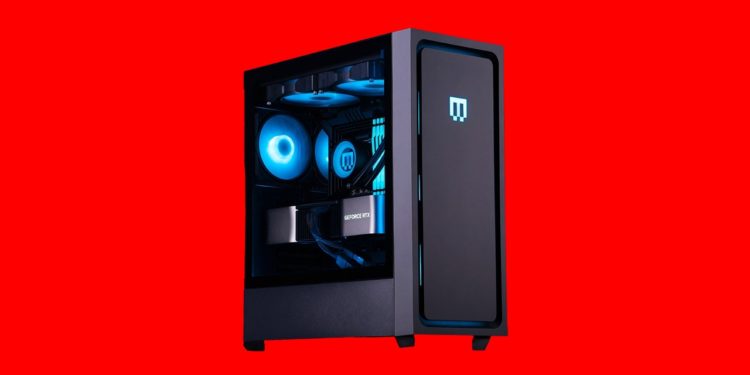By WIRED
I used the Maingear MG-1 to play a lot of Bethesda’s Starfield–which, despite being a power hog, does not support ray-tracing–as well as the latest update to Cyberpunk 2077, which does. Both held up surprisingly well. After playing on the 3090 Ti in my main desktop, and even the 4070 laptop GPU in the Razer Blade 14, I expected the 4060 to be a mild step down, but I played both games with minimal issues.
Starfield struggled the most, though. With settings cranked to Ultra, at 1080p, I was able to consistently hit 30 frames per second, though the game started to slog a bit in crowded areas, like cities. Updates since the game’s release have improved performance a bit, but if you’re hoping to use brute force to overcome some less-than-optimized games, you might at least want to step up to the MG-1 Platinum, which comes with an Nvidia RTX 4070.
While playing Cyberpunk 2077, I was able to crank the graphics settings as high as they would go—including using the ray-tracing features, which look incredible—at 1440p (while testing a different display), but the system still often struggled to break 50 fps. When I went back to my 1080p monitor, I was able to turn the ray-tracing features back on and consistently hit 60 fps.
Beyond that, though, the MG-1 is mercifully well tuned. There’s almost no bloatware installed. It’s mostly Microsoft’s own apps that all Windows PCs come with, like Office apps.
Customization and Repairability
The convenience of prebuilt PCs can sometimes come at the expense of upgradeability, but Maingear has thankfully made it pretty easy to swap out parts and upgrade components. The glass panel on the side is secured by two thumb screws that easily come off. A second panel on the opposite side can be removed to handle cable management underneath the motherboard.
Nearly everything in the PC is accessible from the main compartment, with the exception of the power supply. That is siloed in a smaller compartment at the base of the tower, with power cables extending from a few holes to run to the motherboard where needed. This is also the space where HDDs will be mounted if you add them during customization. However, if you want to add drives later, you’ll need to get the brackets they mount to, as they don’t come with the PC without a drive.
Of course, it’s worth noting how much you can customize the PC before you even get it. Maingear’s Live 3D Configurator lets you swap out parts, add upgrades, and change the RGB color to see what it will look like with different aesthetics. You can even upload your custom art for the front panel to preview what it will look like when printed.
The configurator displays your preferences in a 3D viewport that you can orbit and zoom in on, and it’s surprisingly detailed. When adding an HDD, for example, it not only adds the drive and the brackets, but even adds the cable running to the SATA port exactly where it will be when it arrives. You can get more information here about your build than I’ve ever seen in any other PC builder.
The 3D configurator also checks compatibility for all the parts you’ve chosen, so you can’t accidentally end up building a custom rig that doesn’t work. For example, when I selected the RTX 4090 graphics card, which would require much more power to run, the configurator lit up with bright yellow warnings telling me to choose a stronger power supply before I could add the PC to my cart.
I was surprised at how much I enjoyed using the Maingear MG-1 Silver. It’s worth noting here that you could probably get a similar, more powerful rig for cheaper if you built it yourself, as I did, but it’s still beefy enough to handle some of the most demanding games. Better still, it’s one of the easiest ways to get a custom gaming rig without having to learn how to build one from scratch. You can pick from a few preset options, or choose which parts to upgrade in an easy-to-use interface, and it arrives fully assembled. All you have to do is plug it in and start gaming.






Discussion about this post